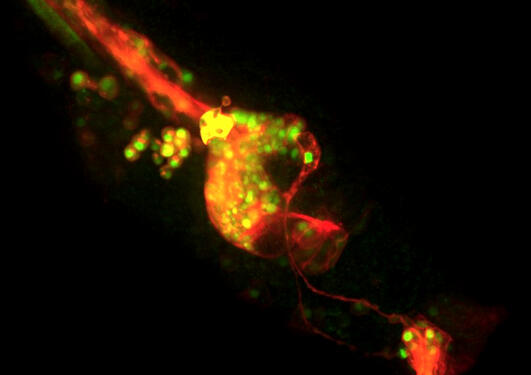Unlocking larval settlement in marine invertebrates
A new video abstract for Current Biology explores how specific chemical cues control the settlement and metamorphosis of Ciona larvae. Watch the film to hear researchers from the Chatzigeorgiou Group discuss their findings.
Unlocking larval settlement in marine invertebrates / Curr. Biol., Feb. 8, 2024 (Vol. 34, Issue 6)
Main content
Researchers from the Chatzigeorgiou Group led by first author Jørgen Høyer, studied how marine larvae from the species Ciona intestinalis use their mechanical and chemical sensors to identify a suitable substrate for settlement and metamorphosis.
Using a nonstandard model organism such as Ciona intestinalis, is challenging due to the lack of standardized protocols. But unraveling the sensory circuit of this tiny marine organism has also been very fascinating. - Jørgen Høyer
Through the paper published in Current Biology, researchers now understand how marine planktonic larvae, which mostly have very small nervous systems, are capable of sensing a huge diversity of cues that are present in the ocean. They also have a better understanding of which cues are important for marine larvae to identify a suitable site for settlement and metamorphosis.
